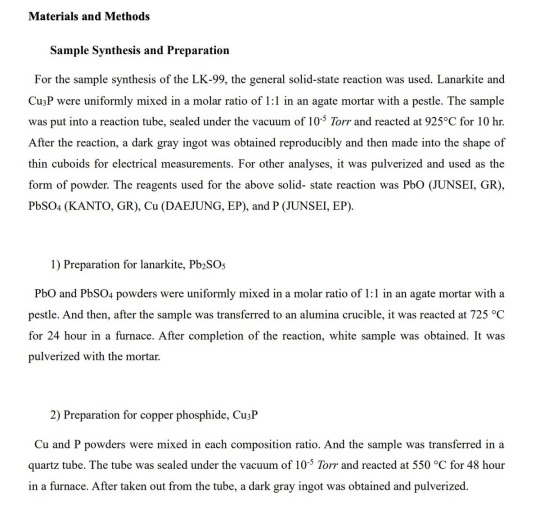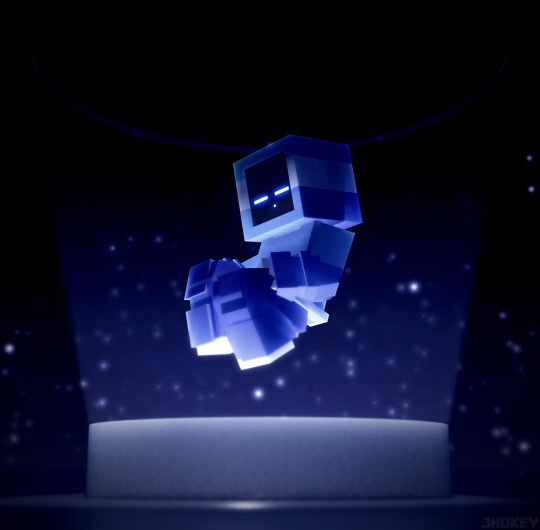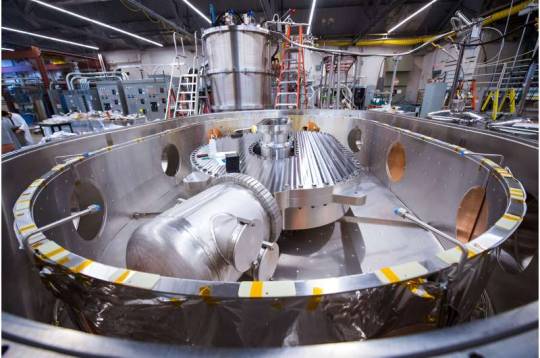#Superconductivity
Text

Scientists reveal the first unconventional superconductor that can be found in mineral form in nature
Scientists from Ames National Laboratory have identified the first unconventional superconductor with a chemical composition also found in nature. Miassite is one of only four minerals found in nature that act as a superconductor when grown in the lab. The team's investigation of miassite revealed that it is an unconventional superconductor with properties similar to high-temperature superconductors.
Their findings, published in Communications Materials, further scientists' understanding of this type of superconductivity, which could lead to more sustainable and economical superconductor-based technology in the future.
Superconductivity is when a material can conduct electricity without energy loss. Superconductors have applications including medical MRI machines, power cables, and quantum computers. Conventional superconductors are well understood but have low critical temperatures. The critical temperature is the highest temperature at which a material acts as a superconductor.
Read more.
49 notes
·
View notes
Link
By showing that quantum mechanical objects that are far apart can be much more strongly correlated with each other than is possible in conventional systems, the researchers have provided further confirmation for quantum mechanics. What's special about this experiment is that the researchers were able for the first time to perform it using superconducting circuits, which are considered to be promising candidates for building powerful quantum computers.
Continue Reading
120 notes
·
View notes
Text


This is huge news. Probably some of the biggest news we might get in a lifetime
11 notes
·
View notes
Text

Superconductivity
The commercialization of technologies like maglev trains or superconductors, allowing objects to levitate, is nearing reality.
Could we soon experience the sensation of floating in mid-air?
6 notes
·
View notes
Text
8 notes
·
View notes
Text
Look I'm just not calm about the nebulous possibilities of superconductors. Whether the work of the team out of South Korea is or is not all they claim, I'm just really excited for the potential to see such a monumental breakthrough in my time. To see how it gets incorporated, to see new versions of familiar technology touting LK-99 as a component even when it doesn't actually improve that particular item much. I want to see the world all excited about the same thing, even a little.
5 notes
·
View notes
Text
they finally debunked LK-99 i fucking knew it
basically the “superconducting properties” — levitation and sharp resistivity drops — were entirely due to separate phenomena. from what i can tell, the actual LK-99 material itself is an insulator that exhibits ferromagnetic properties (likely ferrimagnetic since it’s a ceramic but idk the wording may have just been wrong). this allowed for the viral “half-levitation” video, which many ferromagnetics are capable of at room temperature under the right conditions.
the resistivity drops are entirely explained by copper sulfate impurities. at 104.8C, Cu2S undergoes a phase transition, basically a shift in the crystal structure. this new structure is vastly more conductive than the bulk of the LK-99 material, hence the apparent drop in overall resistivity at this temperature.
pure single crystals (no impurities or other defects) of LK-99 were synthesized and showed no signs of this resistivity drop.
LK-99 does show flat band electron structure which is interesting and useful on its own, but not nearly at flashy as superconductivity.
3 notes
·
View notes
Link
“An international collaboration of scientists has created and observed an entirely new class of vortices—the whirling masses of fluid or air.
Led by researchers from Amherst College in the U.S. and the University of East Anglia and Lancaster University in the U.K., their new paper details the first laboratory studies of these "exotic" whirlpools in an ultracold gas of atoms at temperatures as low as tens of billionths of a degree above absolute zero.”
“The unusual nature of the observed whirlpools here, however, is due to symmetries in the quantum gas. One especially fascinating property of physical theories, from cosmology to elementary particles, is the appearance of asymmetric worlds despite perfect underlying symmetries. For example, when water freezes to ice, disordered molecules in a liquid arrange themselves into a periodic array.
The spatial symmetry of a system is often readily identified—for example, a honeycomb has a periodic array of cells with hexagonal symmetry. Although the vortex medium used in this new work is a fluid rather than a solid array, it also possesses an internal set of hidden discrete symmetries. For example, one of the team's ultracold gases had the fourfold symmetry of a square, and another had the tetrahedral symmetry of a four-sided die, familiar to players of fantasy games everywhere.”
continue reading
#quantum physics#physics#condensed matter#vortex#temperature#rotation#spinning#oscillation#superconductivity#states of matter#scaling#fractal#cosmology#symmetry#energy#magnetism#tetrahedron
29 notes
·
View notes
Text
Is room temperature Superconductivity going to be the next philosopher's stone?
I'd be curious to see if any new science comes out of this.
5 notes
·
View notes
Text
superconducters..................r they real? they won’t stop talking about that on twitter
2 notes
·
View notes
Text
If verified, huge, likely not verifiable it seems.
3 notes
·
View notes
Text

Tests show high-temperature superconducting magnets are ready for fusion
In the predawn hours of Sept. 5, 2021, engineers achieved a major milestone in the labs of MIT's Plasma Science and Fusion Center (PSFC), when a new type of magnet, made from high-temperature superconducting material, achieved a world-record magnetic field strength of 20 tesla for a large-scale magnet. That's the intensity needed to build a fusion power plant that is expected to produce a net output of power and potentially usher in an era of virtually limitless power production.
The test was immediately declared a success, having met all the criteria established for the design of the new fusion device, dubbed SPARC, for which the magnets are the key enabling technology. Champagne corks popped as the weary team of experimenters, who had labored long and hard to make the achievement possible, celebrated their accomplishment.
Read more.
22 notes
·
View notes
Link
Writing in Nature, researchers at Columbia find evidence that two competing phenomena—superconductivity and ferroelectricity—can occur within the same material. "This is the first time that a tunable switch between ferroelectricity and superconductivity has ever been seen," said corresponding author Daniel Rhodes. "We don't fully understand it just yet, but it's definitely there."
Rhodes, now an assistant professor at the University of Wisconsin, has a particular knack for growing high-quality crystals that can be peeled into atom-thin layers to explore the unusual properties that can arise in two dimensions. He started working on the material in question—MoTe2—as Ph.D. student at Florida State. When he joined Columbia's National Science Foundation-funded Materials Research and Science Engineering Center (MRSEC) as a postdoctoral fellow in 2016, he and colleagues found initial evidence of superconductivity—the resistance-free transport of electrical currents—in single layers of MoTe2.
Continue Reading
57 notes
·
View notes